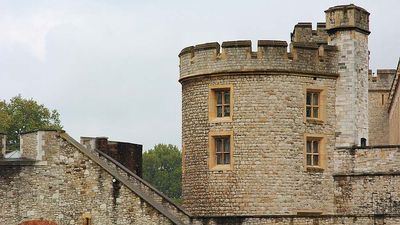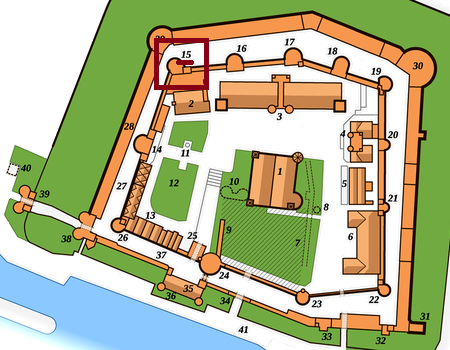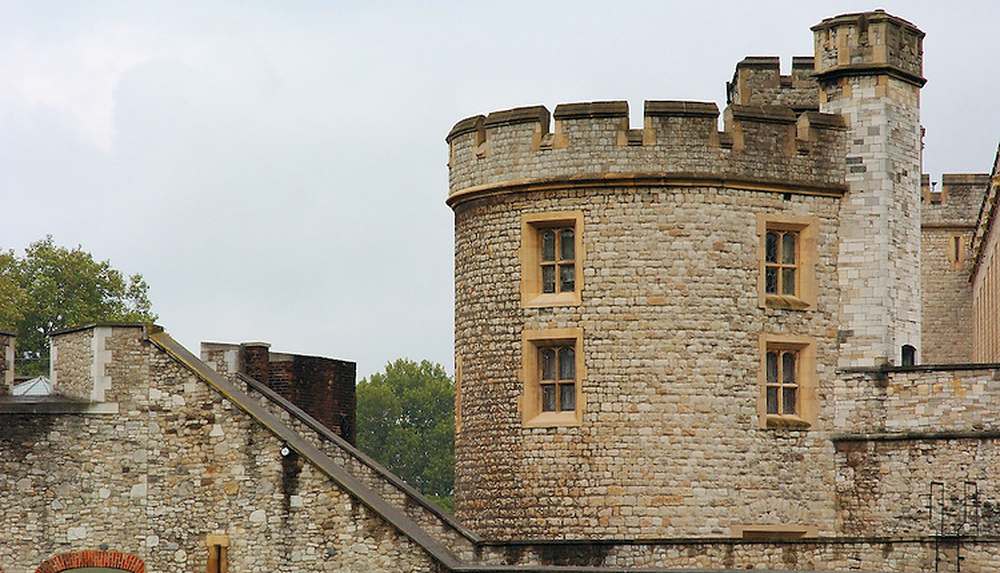The Devereux Tower is one of the towers of the first fortification of the Tower of London. It is on the north-west corner, just behind Mount Legge, the name given to the tower which is in the same location, on the 2nd fortification. It refers to the Earl of Essex, second in name, Robert Devereux (November 10, 1565 - February 25, 1601). Favored by Elizabeth the First of England, he was disgraced in 1600, and after having fomented a plot, he was decapitated with an ax in the Tower of London.

Devereux tower
Origin of the name
The tower acquired its present name from its most famous prisoner, Robert Devereux, Earl of Essex (November 10, 1565 - February 25, 1601). He was executed for treason by Queen Elizabeth I.
Description
This tower has a defensive role. It is circular in shape with an approximate diameter of 10m, rather low. Its top is crenellated and it has rare windows, rather small, on the upper part. On the rest of the wall there are some loopholes. It forms an ensemble with another square tower which is contiguous to it inside the ramparts and which it is necessary to cross to follow the path of round. A wooden door locks the accesses to this tower.
Historically, it was part of the improvements made during the first modification campaign, under Henry III, between 1238 and 1272.
The tower consists of two floors with an apartment in each, connected by a spiral staircase in stone. There were secret passages connecting it to the Chapel of Saint-Pierre Ad Vincula and the Beauchamp tower. A large part of the tower was rebuilt from the mid-eighteenth century.
Devereux, Earl of Essex
Devereux, son of Walter Devereux, first Earl of Essex and cousin of Elizabeth, Lettice Knollys was the heir to the great favorite of Robert Dudley, Earl of Essex, a pupil of Elizabeth. He was a handsome and lively young man.
Essex took liberties with the aging queen but was forgiven. In April 1599 Elizabeth sent Essex to Ireland as Lieutenant and Governor General with an army of 17,000 men and explicit instructions to crush the Earl of Tyrone's rebellion and put Ireland under control. Unlike the Queen's orders, Essex had a secret meeting with Tyrone, made a truce in the name of Elizabeth, and left her post to return to London and explain her decision to the Queen.
Elizabeth, furious, put him under house arrest pending the results of the investigation. Although insulting the charge of treason, Essex was convicted of disobedience and denial of service. He was therefore stripped of most of his property and banished from the court. When he was released in August 1600, he made unsuccessful attempts to regain his post of counselor by writing numerous letters to the Queen. When Elizabeth refused to renew the lease and the patent on his wine farm in September 1600, the outraged count decided to capture the Queen, to rid the council of her rival Robert Cecil and her supporters, and to proclaim James VI , son of Mary, Queen of Scotland. Devereux and his supporters commissioned a performance of Richard II of Shakespeare at the Globe Theater on February 7, 1601, to draw inspiration from his famous scene of deposition. Elizabeth, seeing the danger arrive, declared: "I am Richard II, do not you know that?"
The next day, February 8, 1601, he left his house in town, and with a crowd of supporters, and entered London to try to force a way to the Queen. A force under the command of Sir John Leveson placed a barrier across the street at Ludgate Hill. When Essex's men tried to force the way, Essex's father-in-law, Sir Christopher Blount, was wounded in the skirmish that resulted, and the count withdrew with his men to Essex House. He then went after the Queen's armies besieged Essex House.
Essex was imprisoned in what is now called the Devereux Tower. He refused to see his wife and children, and on February 19, 1601, he was found guilty of treason at Westminster Hall by his peers. However, he had not given up on the queen's pity, Elizabeth had once given Essex a ring telling her that if he had sent her away, no matter what his crime, he would be forgiven. Essex removed the ring from his finger and leaned out of a window in the Devereux Tower, threw it to a page that was not passing there. The boy gave the ring to Lady Nottingham, wife of the enemy of Essex, Lord Charles Howard, who, therefore, kept the ring for her and never informed the queen.
Essex had requested to be executed privately and as a result was beheaded on Tower Green on Ash Wednesday on February 25, 1601. He was thirty-four years old at the time of his execution and won the distinction of becoming the last person to beheaded at the Tower of London.
Location

See also:
The map of the tower of London with the list of the buildings





















